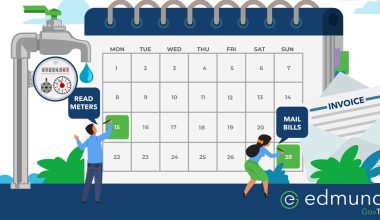Let’s talk about your cut-off for non-payment policies, specifically how much you charge and to which accounts you assess the fee.
How much is your cut-off fee for non-payment?
At the 2010 Logics User Meeting, I presented the results of a Delinquent Accounts Study we conducted. Of the 56 Logics customers that responded to the survey, 54 of them assessed a cut-off fee which ranged from $10 to $125. 27 customers, or half of the study participants, charge a fee of $25.75 or less. I would argue that a fee in this range doesn’t begin to recover the cost to the utility of administering the disconnection and subsequent reconnection after the account pays.
The Government Finance Officers Association’s (GFOA) Best Practice for Measuring the Full Cost of Government Service that states:
“The full cost of a service encompasses all direct and indirect costs (both operating and capital) related to that service. Direct costs include the salaries, wages, and benefits of employees while they are exclusively working on the delivery of the service, as well as the materials and supplies, and other associated operating costs such as utilities and rent, training, and travel. Likewise, they include costs that may not be fully funded in the current period such as compensated absences, interest expense, depreciation or a use allowance, and pensions, and other postemployment benefits.
Indirect costs include shared administrative expenses within the work unit and in one or more support functions outside the work unit, the entity-wide indirect costs (e.g., legal, finance, human resources, facilities, maintenance, technology).”
With this in mind, the cost of a disconnection for non-payment includes, at a minimum, the following direct costs:
- Office staff salary and benefits to review and prepare the cut-off list
- Paper and consumables to print working reports and the final cut-off list
- Field staff salary and benefits to disconnect the service
- Field staff salary and benefits to reconnect the service after the customer pays
- Gas and maintenance expenses for the vehicle(s) used by the field staff
Without even taking into account indirect costs, it’s easy to see where $25 probably doesn’t begin to cover the cost of a disconnection for non-payment.
If your cut-off fee isn’t high enough to recoup the cost of administering the cut-off and subsequent reconnection, I encourage you to increase your cut-off fee.
When do you charge the cut-off fee?
Do you adhere to the best practice of charging the cut-off fee to every account on the cut-off list as soon as the list leaves your office? Or do you still follow the practice of contacting the field service technician each time an account on the cut-off list comes in to pay to see if the account has been cut off yet or not, and only charge the fee if the account has actually been cut off?
I firmly believe that it is inherently unfair to charge the cut-off fee only to accounts that have actually been cut off. Why should accounts that are farther from your office, and therefore end up being cut off later than accounts closer to your office, be given additional time to pay? Let’s face it, every account on the cut-off list is seriously delinquent and has had ample opportunity to pay before cut-off day. Not to mention the added confusion in the office when the cashier has to contact the field service technician every time a customer on the cut-off list comes in to pay.
In the Delinquent Accounts Study that I mentioned above, 76% (41 of the 54 customers) have a policy of charging the cut-off fee to every account on the cut-off list when it leaves the office. I was surprised that number wasn’t higher. If your policy isn’t to charge the fee to every account when the cut-off list is prepared, I strongly recommend that you consider changing your policy.


